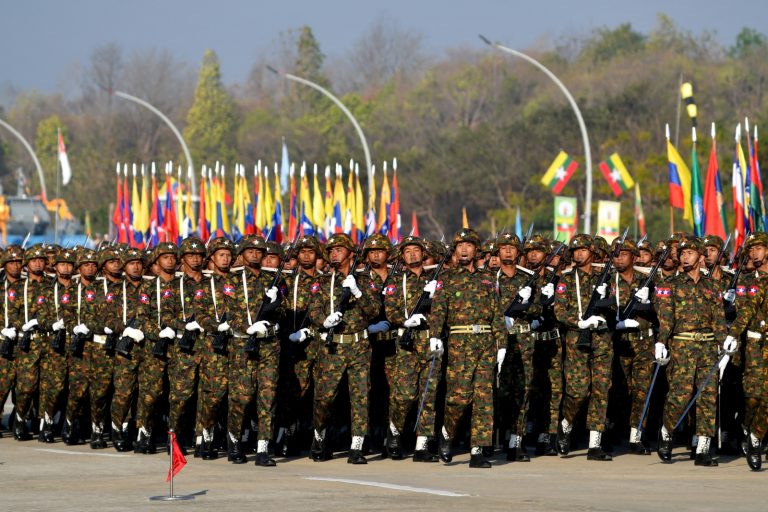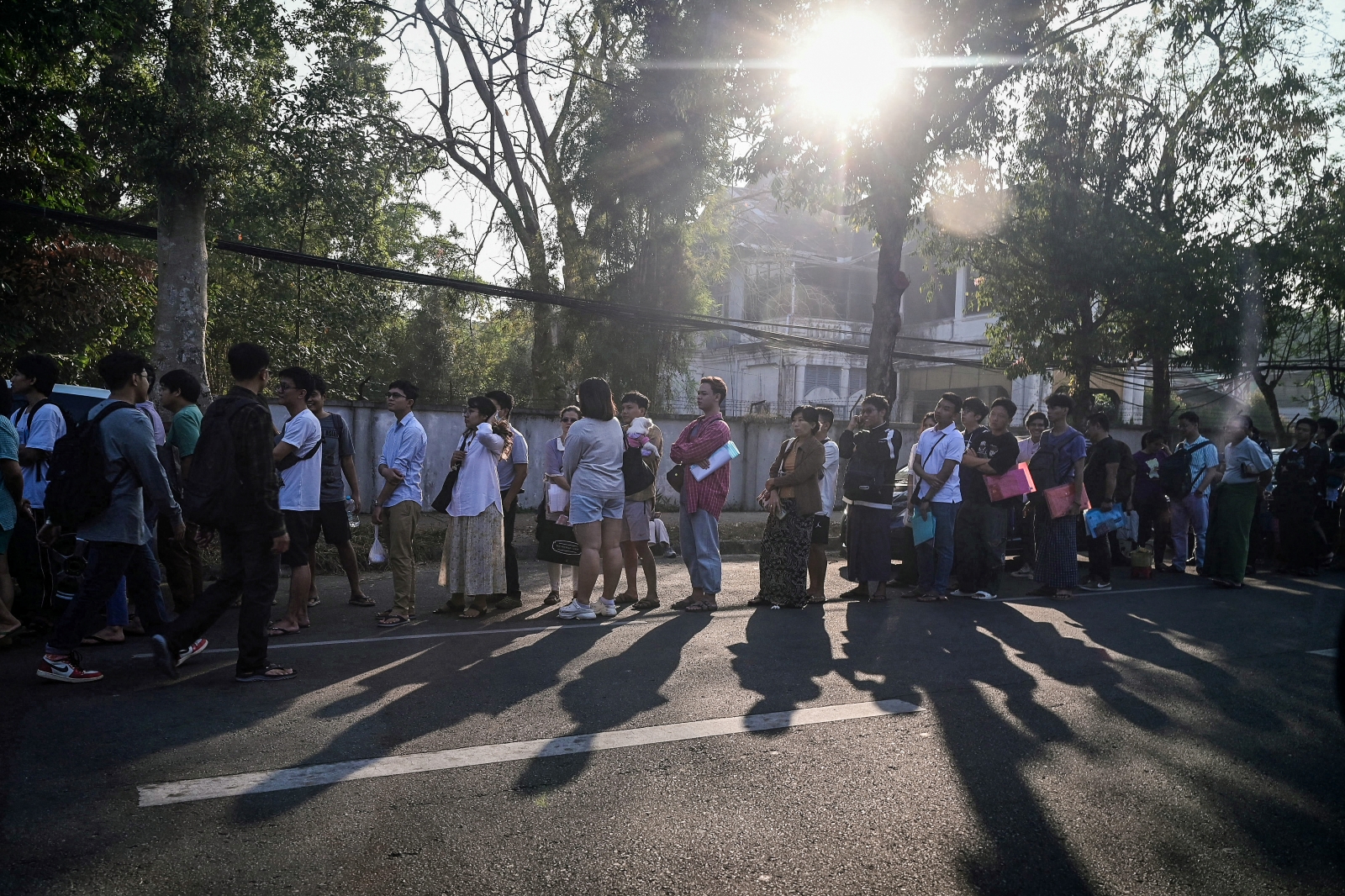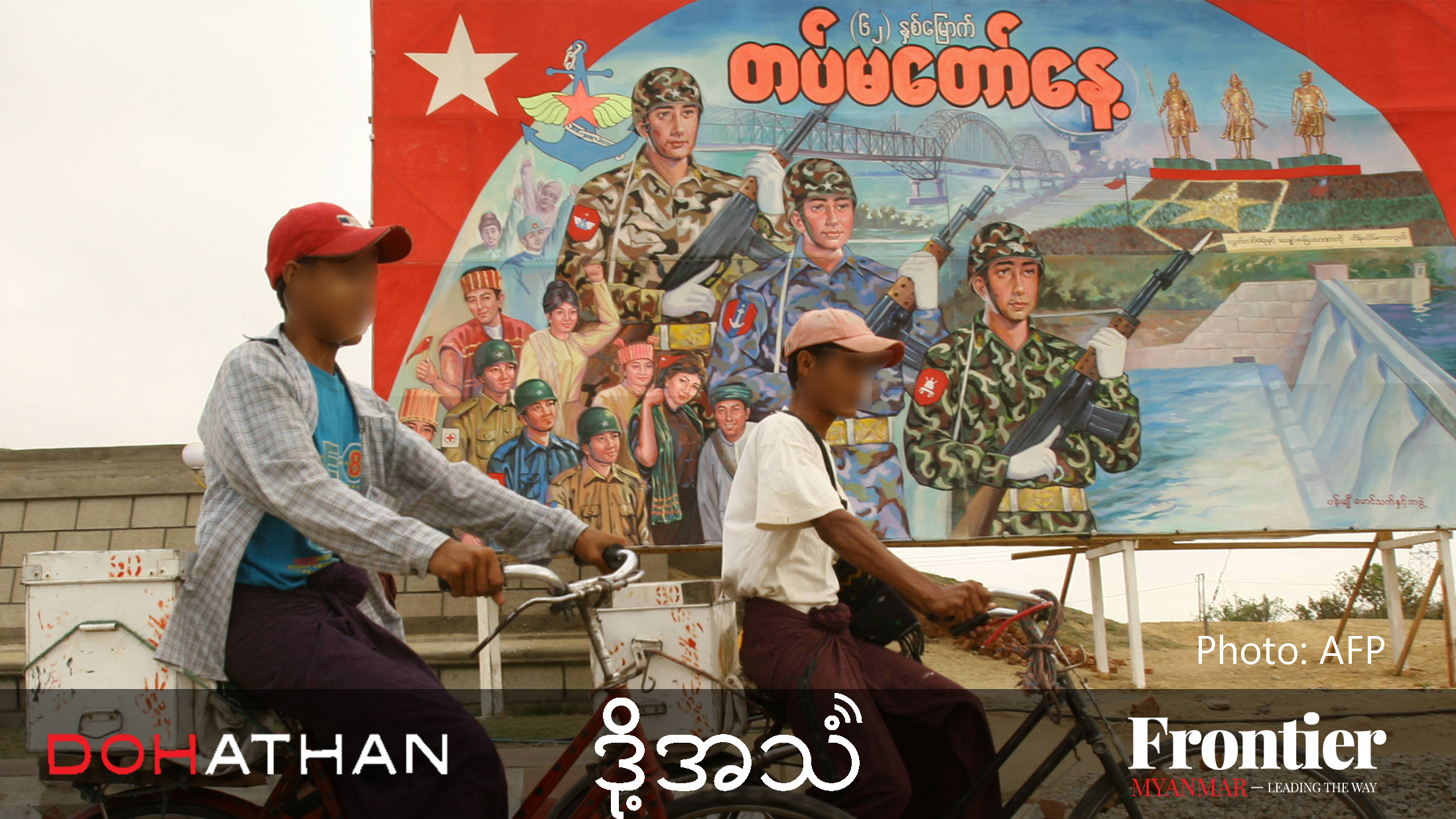The military’s former bureaucratic arm, the ubiquitous General Administration Department, can help to chart a more federal future for Myanmar.
By LACHLAN MCDONALD | FRONTIER
The transfer of the General Administration Department from the military-controlled Ministry of Home Affairs to the civilian Ministry of the Office of the Union Government in late 2018 was an important step towards the goal of demilitarising Myanmar’s governance. It was also an immensely important symbolic achievement for the National League for Democracy government.
However, ensuring that the reforms also support decentralised governance, which is where they could have their most powerful influence – and which is key to Myanmar’s political, economic and social transitions more generally – will require the government to go further.
The GAD is the enduring spine of subnational administration in Myanmar. It is a sprawling bureaucratic network of nearly 36,000 staff that extends from its union headquarters to each state and region and every district, township and ward or village tract in the country.
Modelled on the law and order-oriented system of district administration introduced by the British, the structures and institutions of the modern GAD were formally established in 1988 by the State Law and Order Restoration Council. With a broad mandate to preserve peace and stability, the department provided the bureaucratic means for military leaders to exert control in the outermost reaches of the country, implement state policy and also enact surveillance.
The GAD’s current mandate continues this longstanding role at the heart of public administration. Today, its officers undertake a variety of tasks, including land administration, service delivery and tax collection. Indeed, the main contact Myanmar’s citizens have with their government is likely to be via the GAD at the township and sub-township levels.
The GAD also plays a key role in coordinating, convening and monitoring government activities. Traditionally, anything requiring a multi-sectoral or emergency response has fallen into the department’s lap. At the critical township level, the GAD township administrator helps coordinate among union ministries and heads committees comprising various departmental officials.
Until very recently, the functioning of this important and well-established instrument of state power was shrouded in secrecy and stood apart from the elected government. When it was part of the Ministry of Home Affairs, GAD staff were wholly accountable to the Tatmadaw commander-in-chief, not the civilian administration. This disconnect was cited by NLD lawmakers – who are only too aware of GAD’s surveillance role during the days of military control – as a key obstacle to implementing the party’s reform agenda.
Even with its recent transfer to civilian control, military ties still run deep within the GAD and its parent ministry. The minister, deputy minister and deputy permanent secretary of the Ministry of the Office of the Union Government are all retired military officers. Inside the GAD proper, 30 percent of all staff have military connections including the majority of gazetted positions and almost all senior leadership of the department. Of course, the presence of ex-military officers is common across Myanmar’s civil service and should also provide the GAD with institutional continuity as it moves forward.
Nevertheless, shifting the GAD’s reporting lines is an important step towards more responsive and accountable governance. Structurally, Myanmar’s elected governments will have considerably more reach in terms of policy implementation and reform, day-to-day public administration and service delivery than was previously the case.
However, more important is how the newly civilianised GAD will work in practice. Clues to this are provided in a Reform Framework, prepared by the Ministry of the Office of the Union Government in consultation with state and regional as well as district administrators in late 2019. Predictably, key features include modernisation, reform of regulations, capacity building, and a reorientation towards a more citizen-focused service delivery role, with greater transparency and accountability. These should all help improve the quality and effectiveness of public administration and build public trust.
Notably, the reform agenda also includes the goal of strengthening the policy support function provided to the state and region governments. This may be where the true potential of the GAD reform lies.
With the recent push for constitutional change coming up empty, and further amendments likely off the table for some time, the existing subnational governments offer the best hope for achieving the elusive dream of a more federal and democratic system of governance in Myanmar. They create space for new forms of political contestation and offer a critical platform for a more sustainable, inclusive and accountable system of governance that is better suited to Myanmar’s considerable social and economic diversity.
Thus, by strengthening the institutional capacity of state and region governments, the GAD reforms have the potential to nudge “federalism from below” and do so from within the current constitution.
However, the framework is missing the details on how this goal will be achieved. In particular, it is silent on critical issues in human resource management, coordination and reporting that severely constrain the oversight and supervision powers of the state and region governments.
The GAD plays a special role within these subnational governments. The 2008 Constitution mandates that the respective head of each state or region GAD office serves concurrently as executive secretary of that particular state or region cabinet and the chief aide of the chief minister. In the absence of a permanent subnational bureaucracy, the GAD also serves as the de facto office of the executive branch of the subnational governments, responsible for all correspondence and administrative needs. Wages of GAD staff working at the subnational level are also paid out of state and region budgets.
Yet despite being central to the functioning of the subnational governments, the GAD is formally part of, and accountable to, its union ministry. The state and region chief ministers have no formal role in deciding who is posted to the respective executive secretary positions, though informal consultations typically occur at the time of the appointment. And while the GAD offices tend to coordinate with the subnational executive, the links are informal and ultimately based on the quality of interpersonal relationships between key players.
Indeed, when pushed, GAD executive secretaries say they have two bosses: the “big boss” in Nay Pyi Taw and the “small boss”, the chief minister. It is clear, therefore, where staff loyalties lie.
At the local level, too, the GAD’s coordination capabilities are inhibited by informal arrangements. Township administrators have no formal authority over other government departments. Consequently, the GAD’s coordination mandate, while unquestioned during days of military leadership, has eroded. At the municipal level, ambiguities exist between the authority of city administrators, accountable to subnational governments, and GAD township administrators. This recently came to a head in Yangon and diminished the effectiveness of the community response to the COVID-19 crisis.
Unless these issues can be resolved, the reform framework will likely fall short of its aim to strengthen subnational governance. Three relatively modest organisational changes could substantially improve the all-important coordination and oversight function of the subnational political leadership.
First, the chief ministers should be formally involved in the posting and performance evaluation of the GAD executive secretaries and other senior GAD officials in their jurisdiction. The chief minister may also be authorised to transfer GAD officials within the state and region. The Ministry of the Office of the Union Government would retain ultimate control over who is proposed for senior roles and would be responsible for promoting GAD officials and transferring them outside the state ot region when so needed, but more power would be localised with the subnational government. (Similarly, other subnational ministers should have this power over other directors from union ministries who are working in their states and regions.)
Second, create a formal dotted line that grants GAD township administrators a role in the performance evaluation of counterpart township department officials. This would return to the spirit of the pre-2010 “Adaptation of Expression Law” which gave GAD the power to supervise other departments at the township level, without changing the vertical accountability of township-level departments to their parent ministry.
Third, formalise the flow of information – for example, on performance, financing and staffing – horizontally at the individual levels of administration and vertically through the GAD to the subnational government. The resultant matrix reporting structure created by the two above changes provides a framework to enhance horizontal coordination and strengthens the capacity for subnational oversight. Union government officials, however, may need some convincing to share their powers and information with the states and regions.
Separately, but no less importantly, the GAD should redouble its focus on recruiting, promoting and retaining more women. As of late 2019, women accounted for barely more than 10pc of the department’s gazetted officers; all township administrators were men and only about 100 of the nearly 17,000 ward and village tract administrators were women. Public administration institutions cannot be responsive to community needs unless they reflect the communities that they serve.
The government should be commended for embarking on such a momentous reform. The Reform Framework provides an important roadmap for a more professional and accountable civil service. Of course, these transitions will take time, given the GAD’s strong military legacy and the need to establish trust. But they are a step in the right direction.
However, to unlock the true potential of the reforms, the government should go further. The states and regions were established mainly as forums for greater political inclusion. They are also notionally responsible for inspecting, supervising and coordinating the union government activities occurring within their jurisdiction. However, with limited administrative powers, they are severely hamstrung in this regard. The reforms suggested here, which simply formalise existing informal practices, can realign the GAD’s ubiquitous bureaucracy and its renewed mandate under civilian control to fill this important gap.







